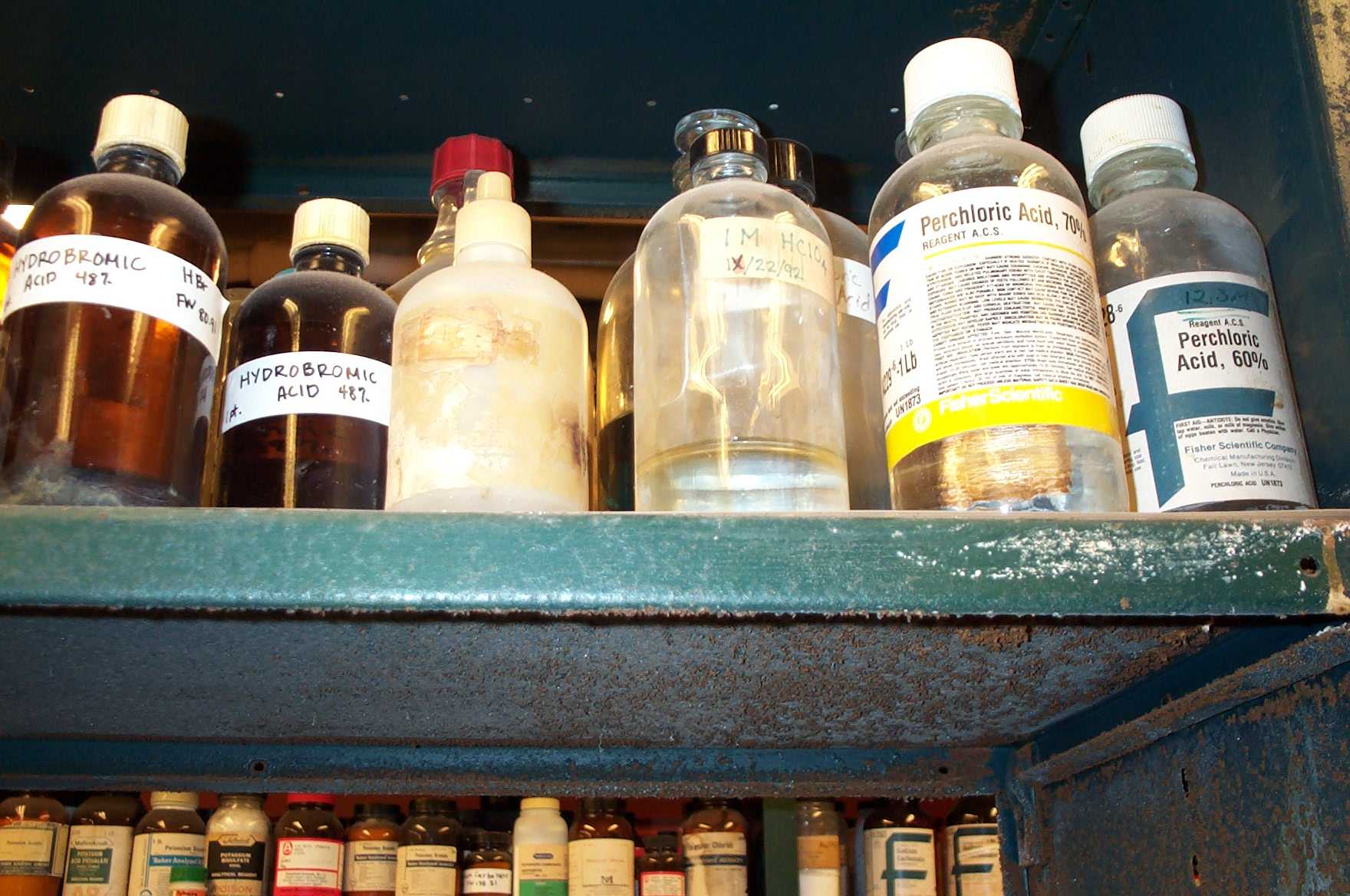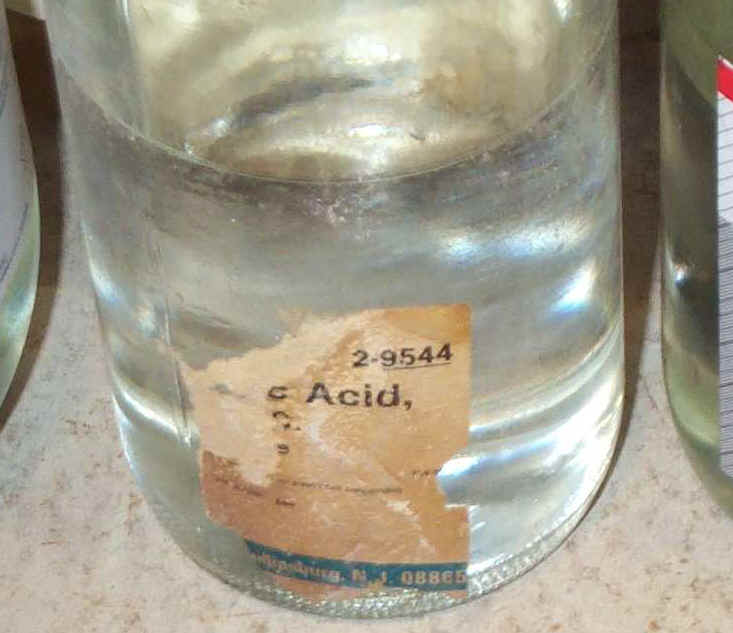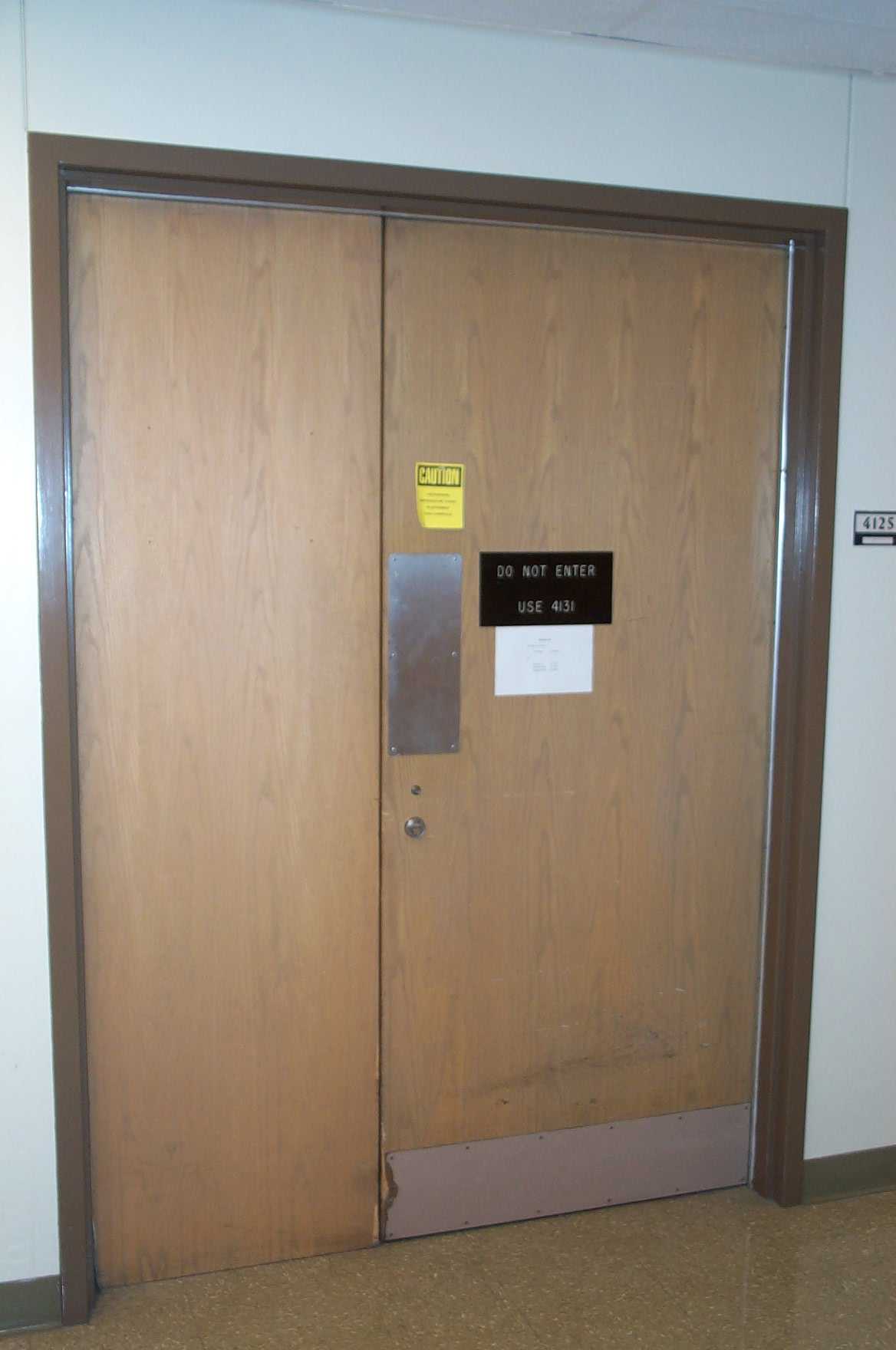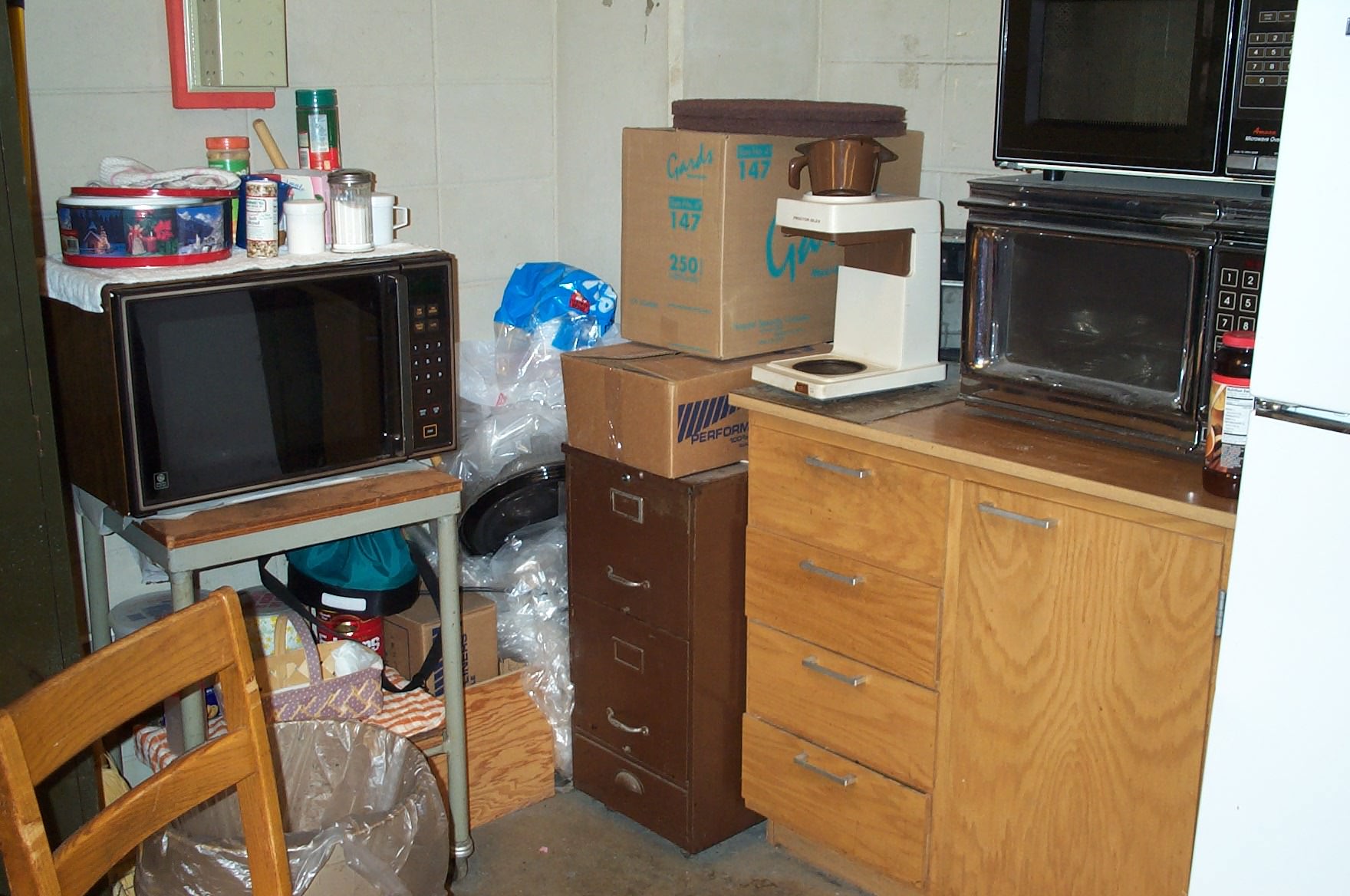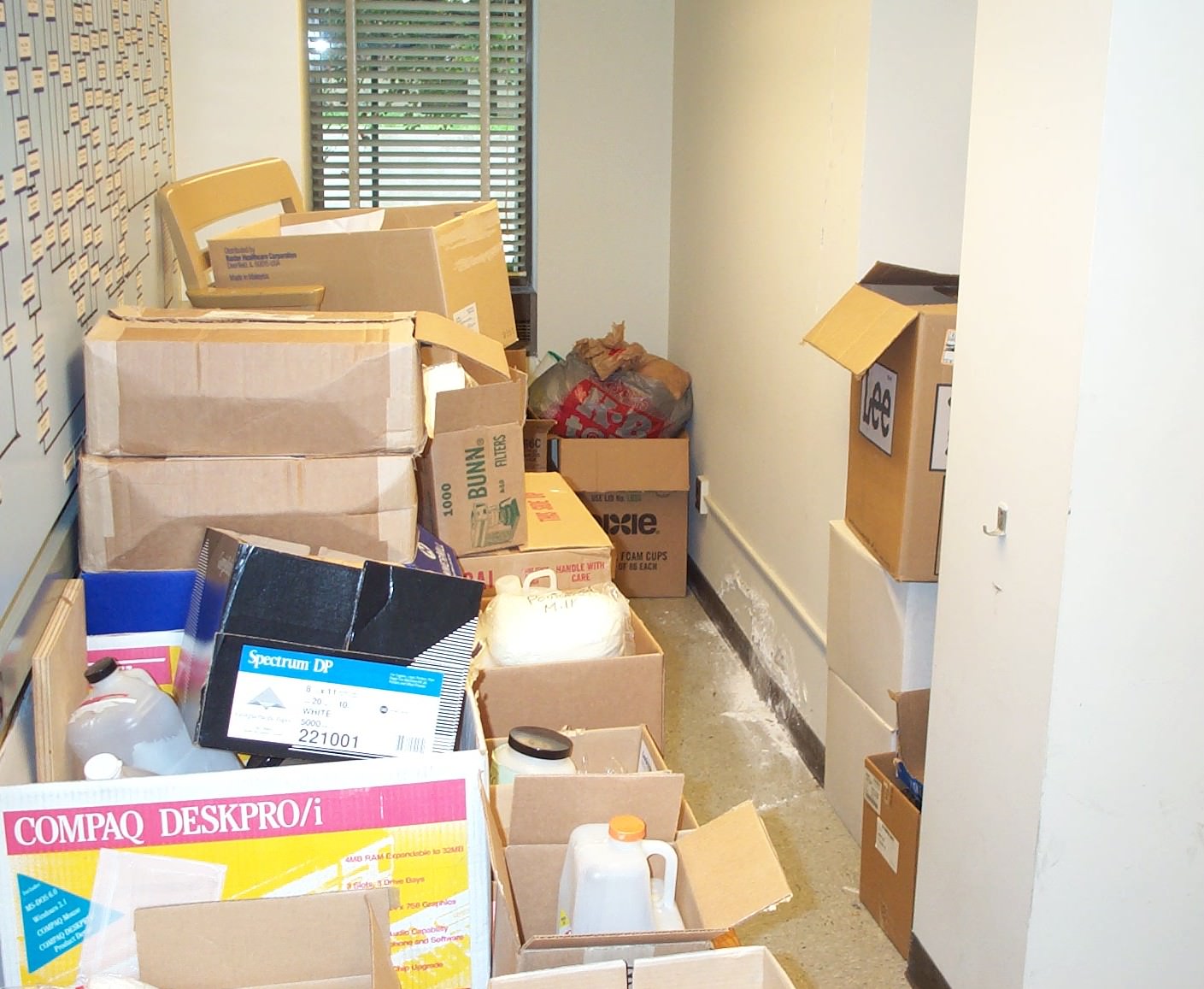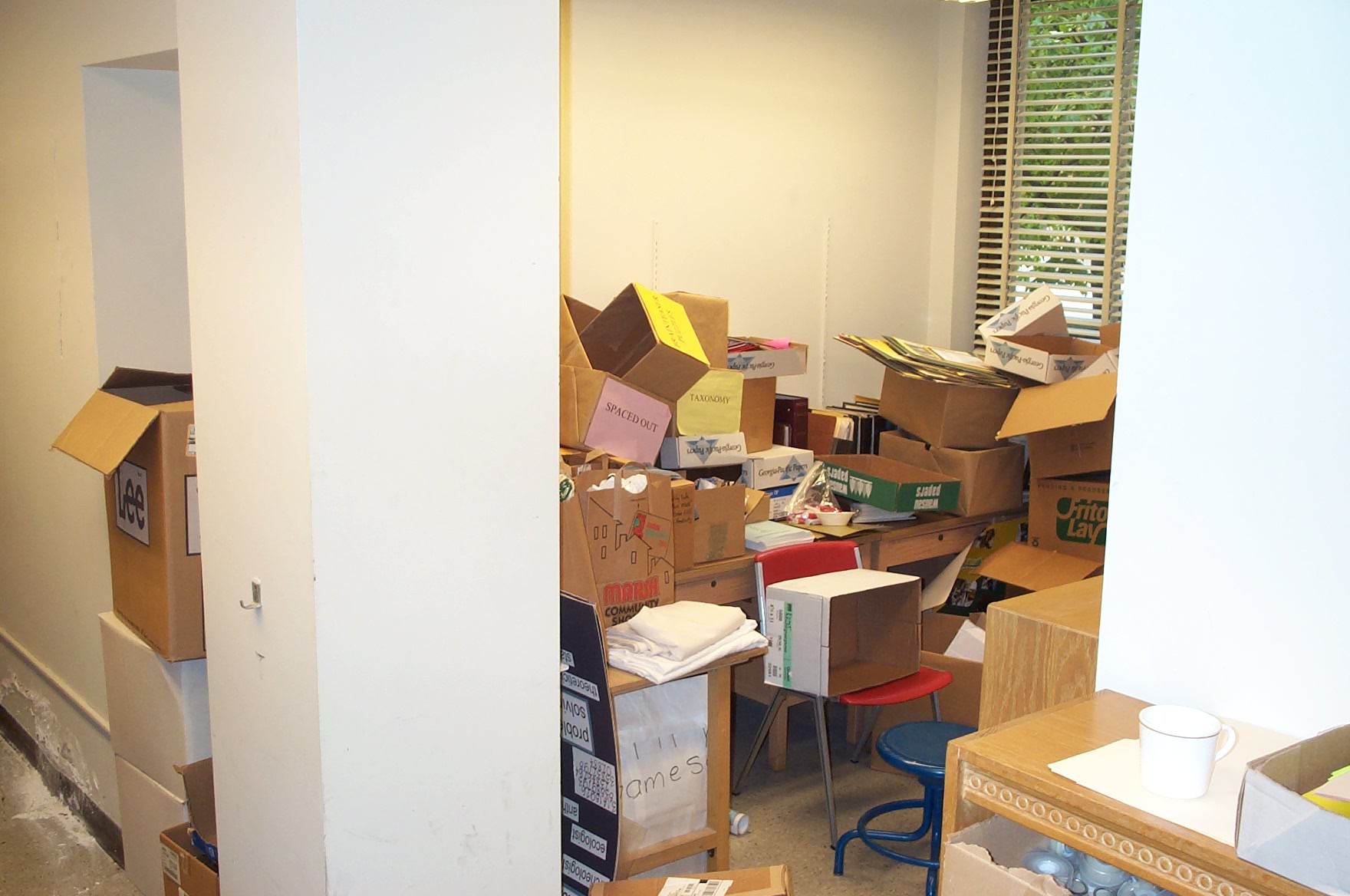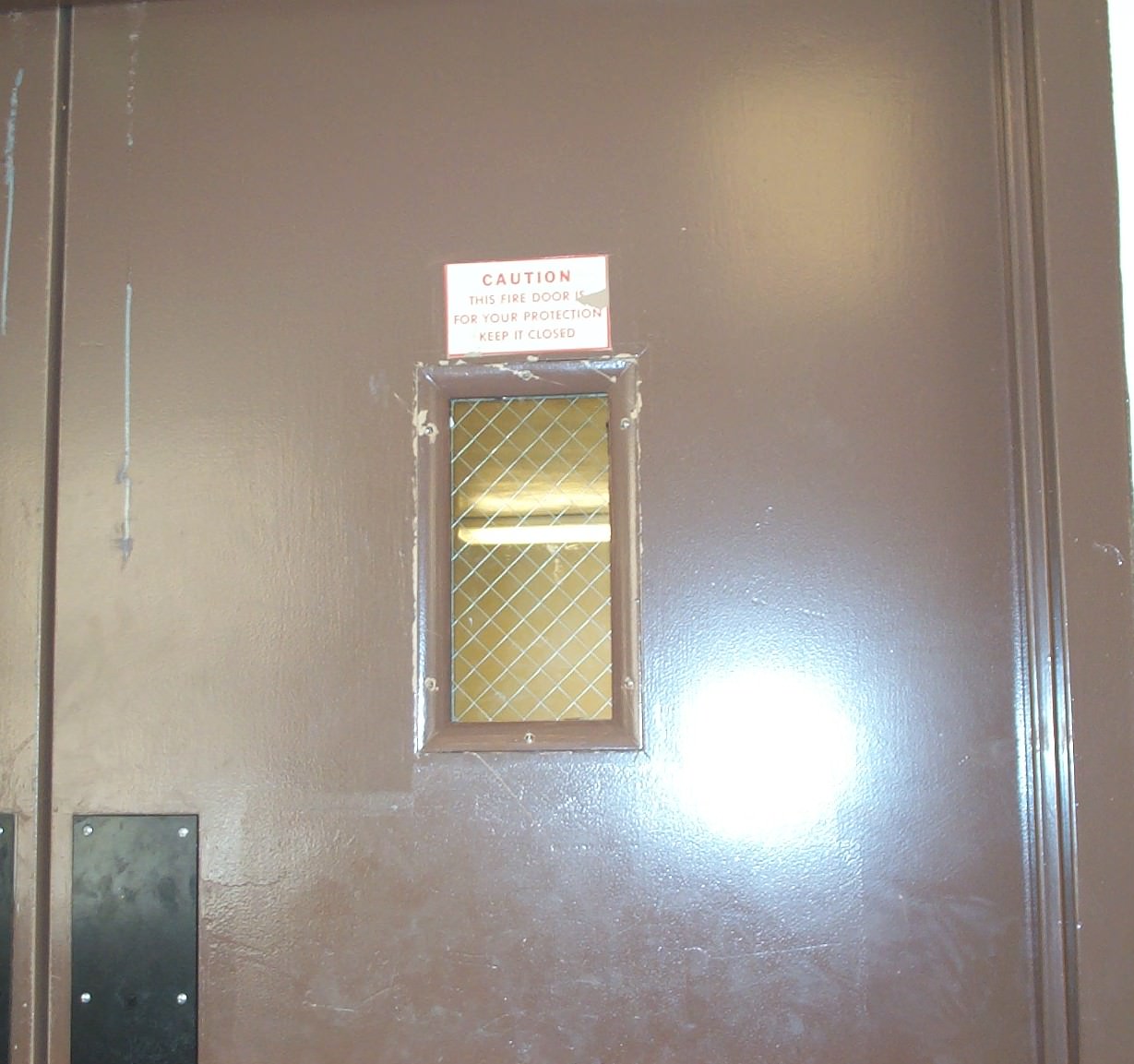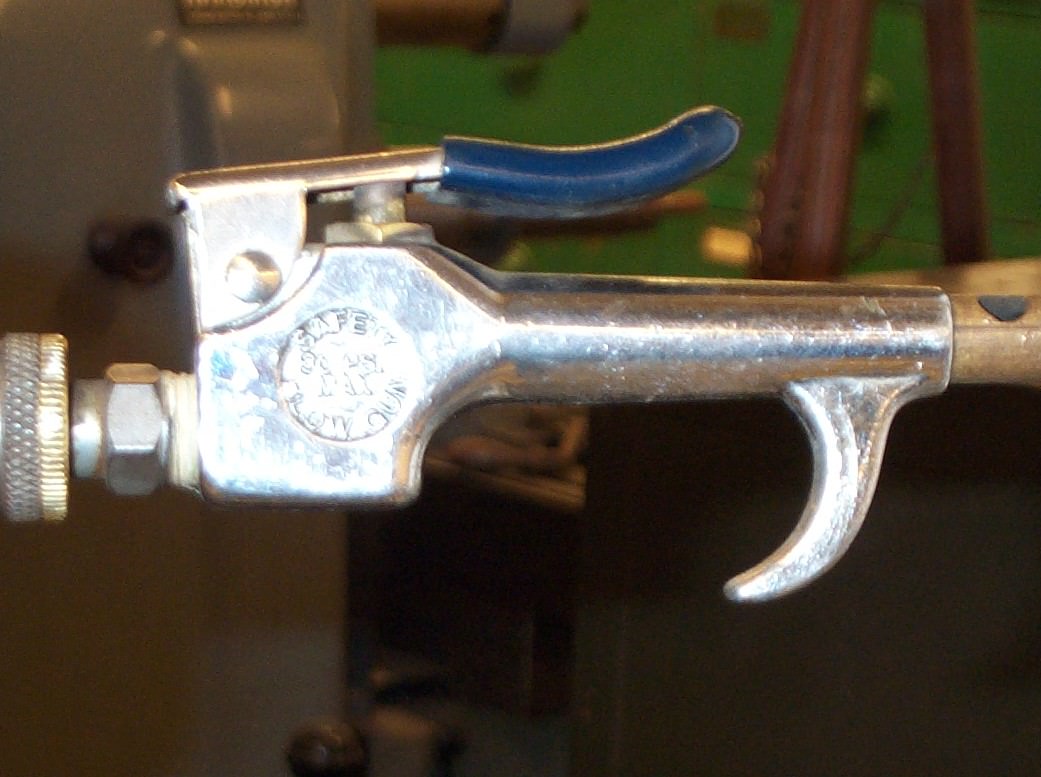Commonly Questioned Inspection Wording
- The rules are made and/or required by OSHA, EPA, DOT, NRC, the State of Indiana and Purdue, not by Chemistry or anyone in Chemistry, and not by REM.
- Most of the rules have an excellent justification, and are not particularly difficult to implement. They are standard in the so-called "outside world," and if your child was ever injured or made ill because of an employer's failure to enforce these sorts of safety rules, you'd holler like hell.
- Keep in mind that safety is about a lot more than just chemical safety.
Walking/working areas kept clear.
Free of chemical containers, equipment, hoses, tubing. Major room aisles (leading to any room exit door) must be kept at 3 feet wide if originally designed. The smaller aisles leading to the major aisles must be 2 ft. (from floor to 8 ft).
Keep plenum space (space above the ceiling tile) free of wires and cables except for approved "plenus rated" data wire.
JAFCI people and PIC crew areto install only plenum rated wire. Nothing else is to go in plenum. Other arrangements must be made.
Keep doors clear
A square on the floor, on each side of the door opening, with side of square = door width.
Hose in sink
"Possible potable water supply cross connection exists. Hose(s) from spigot placed inside drain and/or touch bottom of basin. Cut hose(s) to a length no more than halfway below flood plane." The choices are:
- Replace hose with better method.
- Cut hose to halfway down.
NPCW buttons on taps do NOT mean that the water is from a non-potable supply. That's the same water that goes to the drinking fountains. Indiana Board of Health rules state that you can't hang a hose into a place where contaminated water might pool. Period.
Container labels missing or inadequate.
"Containers of chemicals are inadequately labeled. If acronyms, formulae, or abbreviations are used, post a legend/key near inside of entrance to room." The choices are:
- Label containers with full chem names or mixture composition, or
- Create a legend, a key, and post near by.
Labels must convey info that will allow a custodian, fire-fighter, emergency responder to look up chemical names in an MSDS collection. No abbreviations, acronyms, or formulae will permit this unless somewhere near by, prominently, is a poster or multi-page document with a title that conveys the information:
Abbreviations:
NaOH = sodium hydroxide
AlCl3 = aluminum chloride
Liquids above eye level.
"Display written SOP for accessing extremely high containers of liquids, or move containers of liquids stored above eye level to eye level or below." The choices are:
- Move the liquids down to eye level.
- post written SOP and provide step stool.
Example SOP for high liquid storage. (PDF)
Chemical containers have labels that are deteriorating and/or unreadable.
Click on photo to enlarge. Some example photos are staged and many are of genuine (former) violations. This photo is not to be interpreted as deriving from the particular building/room inspection link which led you here.
Emergency phone numbers missing.
"Emergency telephone numbers (24 hours) must be posted on outside of lab door(s)" (Cited 15 times in BRWN, 4 times in WTHR). The room pictured is minimally, but adequately, posted with emergency info. (It's a lot more like DoorPosterB below than DoorPosterA.)
Print and use one of the templates, or devise your own. [DoorPosterA.pdf] [DoorPosterB.pdf]
Need Designated Areas
"Failure to designate areas for select carcinogens..."
The OSHA Laboratory Standard requires that if you use or store "select carcinogens, reproductive toxins or substances which have a high degree of acute toxicity," then you must designate an area or areas for their use. Definitions and guidance relevant to these terms are given in the Lab Standard. Also see Purdue's most up-to-date list, with further explanation.
Below is the sticker which is available from Purdue for the purpose of designating an area if you don't want to invent your own sign.
Pay very close attention to what happens if you designate an entire room as the designated area.
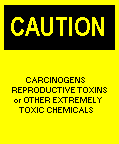
Gas cylinder not supported or incorrectly.
"Unsecured or inadequately secured compressed gas cylinder(s). Uncapped cylinders without regulators are unacceptable. Cylinders with regulators should be secured individually."
The standard text above describes at least four different cylinder problems. (completely unsupported, or supported with wrong means -- i.e. tied up with tygon/pantyhose/coat-hanger, or ganged up behind a single support when not capped, or not having a regulator while uncapped
Here are the most commonly violated rules:
- All cylinders must be supported by a strap or chain made for the purpose, at all times except for the brief moments while you're moving it from cart to a secured location or vice versa. Strap or chain is to be slightly above the center of gravity, and not around the valve and delivery pipe area.
- If it doesn't have a cap on it, then has to be supported separately -- has to have its very own chain or strap and not share it with anything else.
- If it doesn't have a regulator on it, it has be capped. If it isn't capped, it has to have a regulator on it.
- If it's on a cart it has to be capped. Dispensing from a cart is not safe, not allowed. (Wording at left does not cover this one.)

Obstructions
- "Obstructions, including storage, shall not be placed...."
- "Means of egress are obstructed or impeded by...."
- "Corridor obstructed. Remove equipment/box/papers/table......"
- "Eyewash and/or shower is obstructed...."
- "Service panel access obsturcted..."
Commonly obstructed things not always obvious to staff.
- Egress - corridor, doorway, aisle.
- Corridor (corridor generally = main building corridor)
- Aisle (aisle = any walking-thorough space in work area
- Eyewash/shower
- Fire extinguisher, fire suppression sprinkler, fire alarm, electrical service panel
No employee shall be allowed to consume food or beverages in a toilet room nor in any area exposed to a toxic material.
The most common cirucmstance under which this is cited in laboratory buildings (and which has nothing to do with toilet rooms but that's the wording of the regulation) is in a room which has the "designated area sticker" affixed to the door (see note 9 above). Affixing the sticker to the door causes the entire room to be designated for "select carcinogens, reproductive toxins...." and therefore precludes any eating or drinking in the room.
If you wish to retain an area within a lab for a "break area," do not post the entire room as a designated area for chemicals requiring designated areas. Post smaller areas within the lab as the designated areas -- hoods, particular benches -- and then abide by the designations.
Excessive fire fuel loading (paper and/or other combustibles).
This is often ended with "Storage is unstable as well as a fire hazard." Where there is a lot of loosely stored cardboard, paper, plastic, this violation will be cited. Not because it guarantees a fire, but because it guarantees that a small fire will quickly become a large fire.
Failure to post written Hazard Assessment Certification.
OSHA regulations require that hazards in each workplace be assessed and that a written certification of this hazard assessment be posted, which includes all required PPE and the conditions under which it is required. There are are several formats which can be used to accomplish this and they are available at REM Forms under Personal Protective Equipment (PPE) Policy --> Hazard Assessment Certification.
Fire door:
Not a fire door:
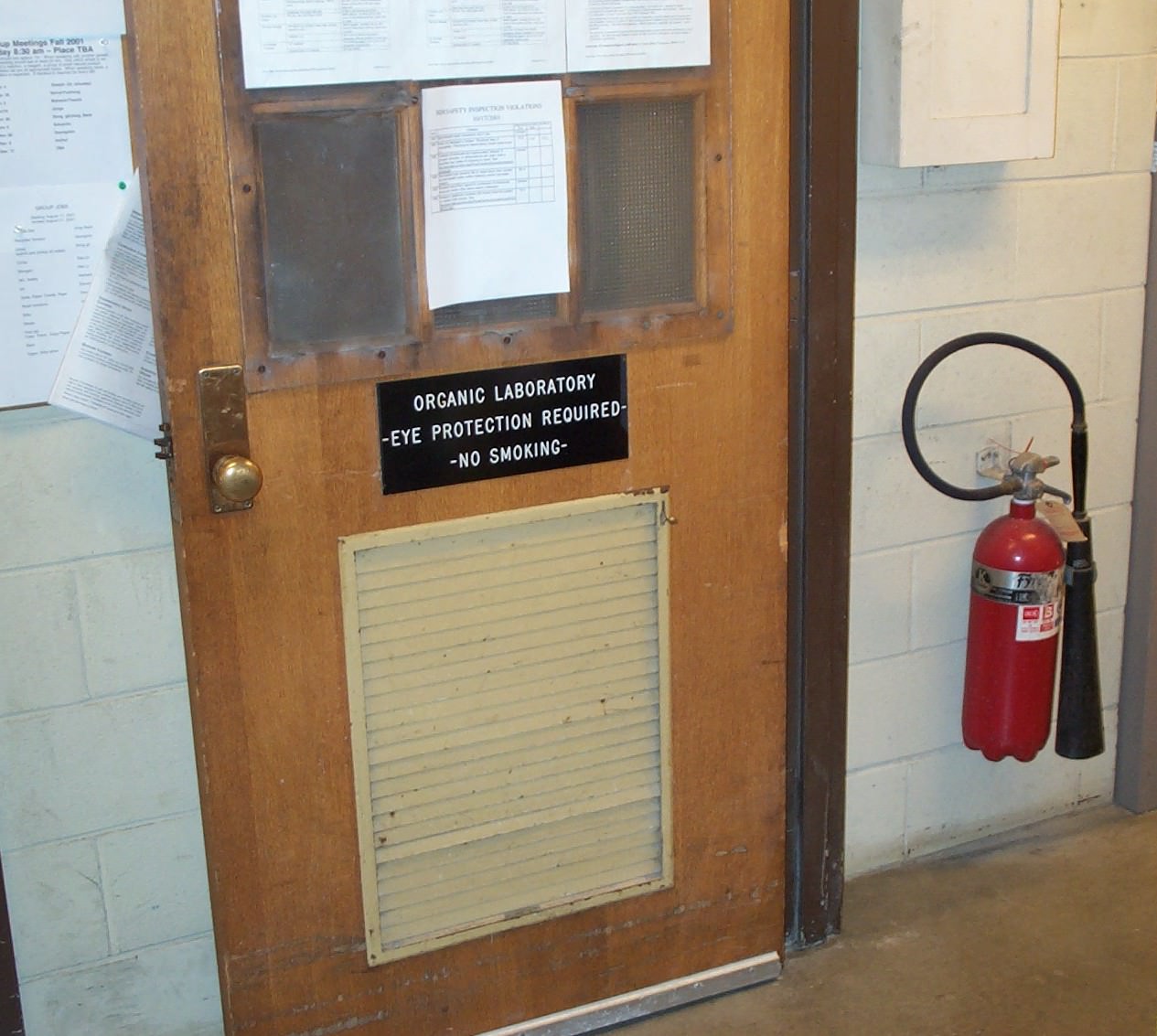
Compressed Air 30 psi nozzle:
last update 04/11/2005
